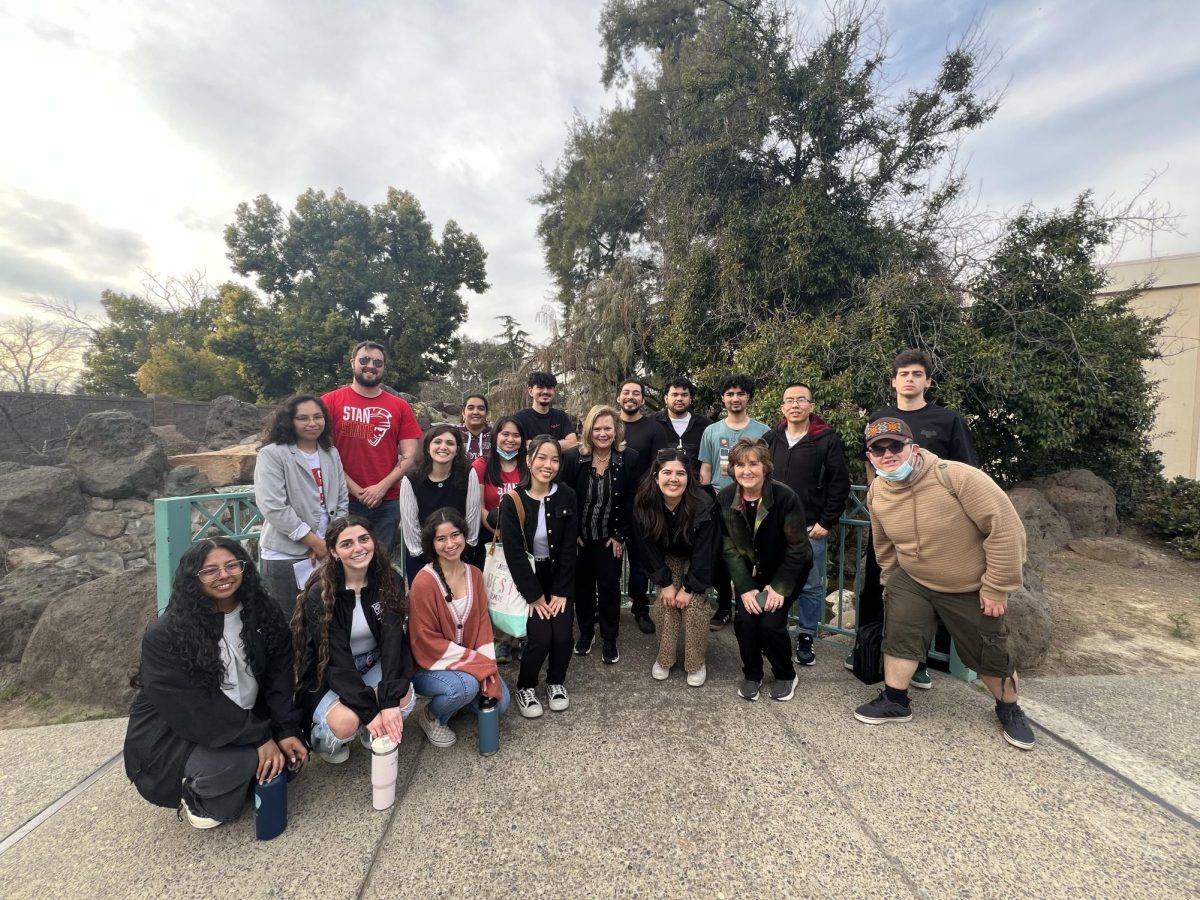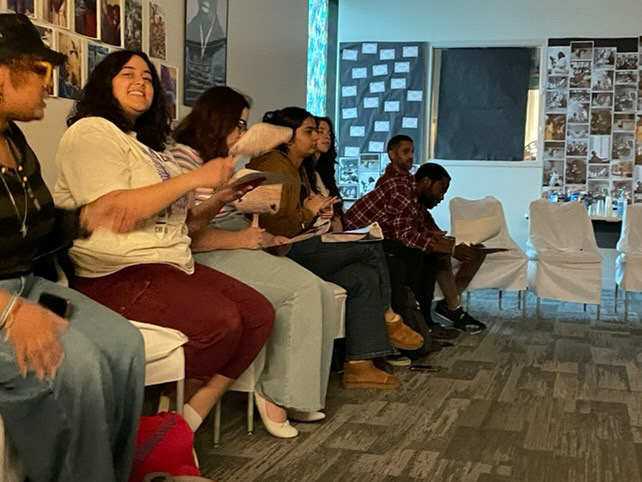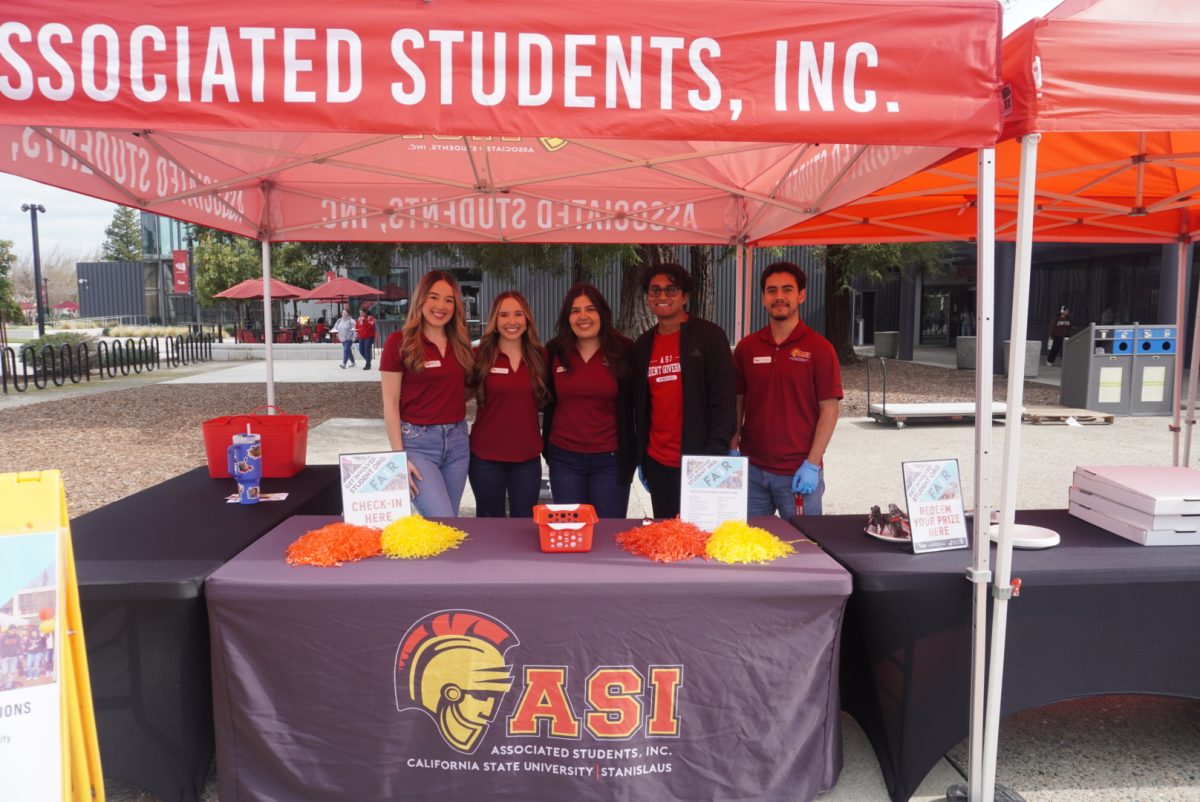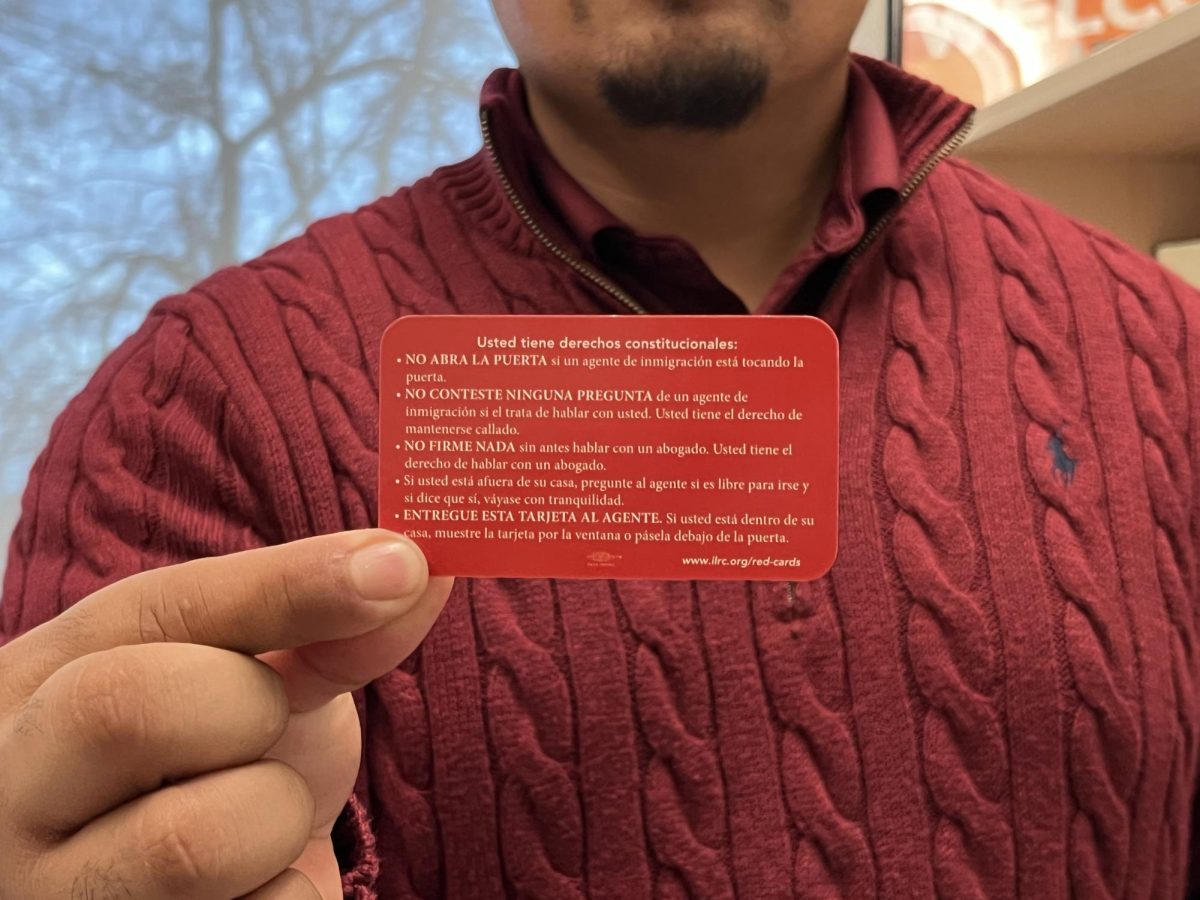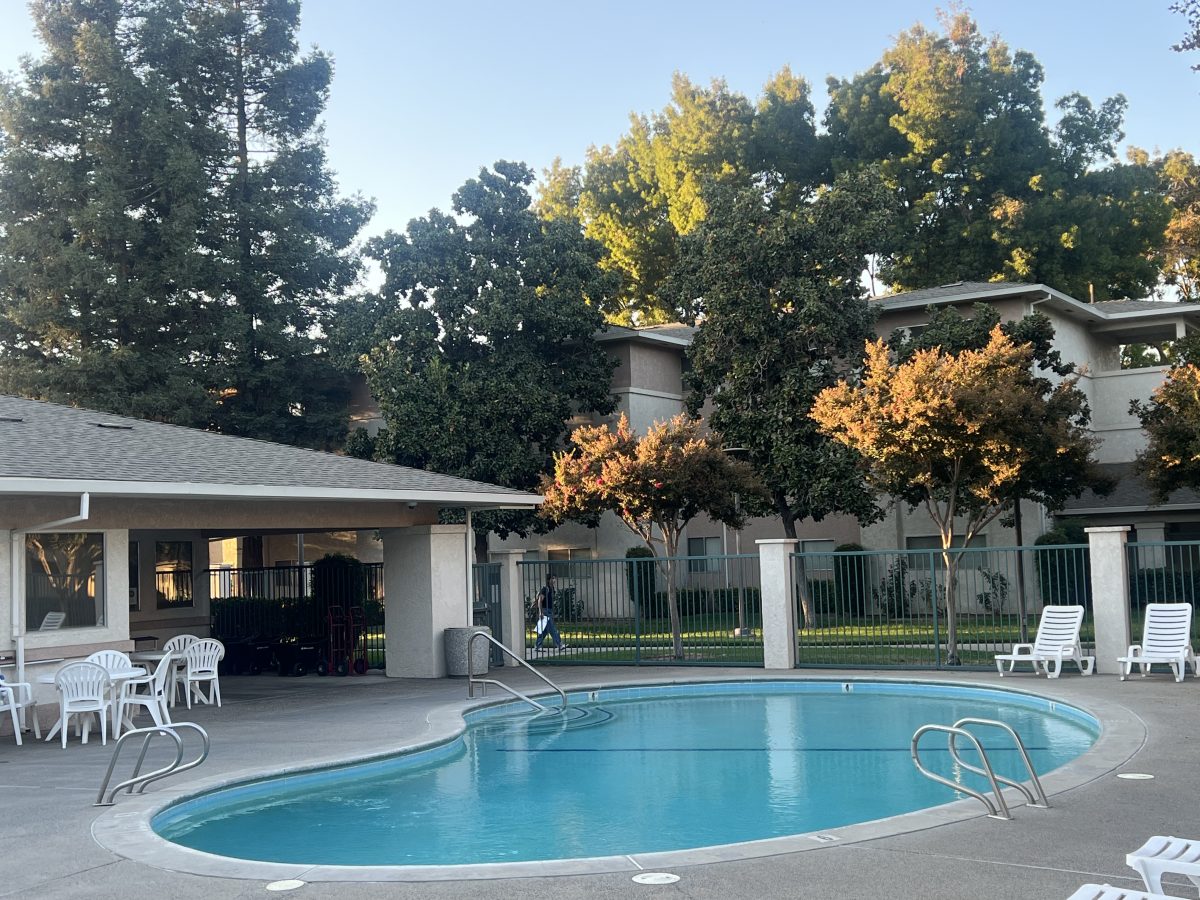Day of Remembrance is not a celebration; rather, it is the day to commemorate the 75th anniversary of the signing of Executive Order 9066, an order that allowed ten new military zones to retain Japanese Americans regardless of their loyalty to the United States.
On April 13, students and faculty at California State University, Stanislaus, (Stan State), remembered the 120,000 Japanese Americans who were incarcerated in 1942 after Franklin Delano Roosevelt signed the infamous executive order.
The commemoration took place in the Art Quad and began with a performance by Ballico Taiko, a taiko group from the Ballico-Cressey School District. Taiko simply means “drum” in Japanese, but Americans think of the Japanese drum ensemble when referring to taiko.
The event ended in the University Art Gallery with a presentation by Special Collections and Digital Archives Librarian Laura French about a collection called “The Turlock Social Club and Executive Order 9066” that will be displayed until April 28.
President Ellen Junn hosted the event and Dr. Bao Lo served as master of ceremonies. Stan State’s Day of Remembrance featured a handful of speakers: Dr. Leroy Morishita, Dr. Sam Regalado, Sherman Kishi and Dr. David Seymour.
Dr. Morishita is the president of California State University, East Bay, and the son of parents who were directly affected by the executive order.
Dr. Morishita described the impact that Executive Order 9066 had on his parents, Japanese Americans who were fortunate enough to own their own farm outright—a rarity for other Japanese Americans during those times.
On Aug. 8, 1941, just four months before the bombing of Pearl Harbor, Morishita’s parents were married. On their one-year anniversary, they were incarcerated in the Gila River War Relocation Center just outside of Phoenix, Arizona, where there were two camps, Canal and Butte. The camps were built on Native American sacred grounds.
“Our U.S. government…did two wrongs to two different groups of peoples with one action,” Dr. Morishita said.
Dr. Morishita’s parents did not tell him about their internment.
Instead, he learned about Executive Order 9066 as an undergrad at University of California, Berkeley and when he came home to Fresno during his holiday break, he asked his parents if they had ever been incarcerated in those camps.
They then told him about their incarceration and explained that they did not want to tell him sooner because he would not know where to displace his anger.
“As a youth, I was a little bit of a hot-head, so they probably were right,” Dr. Morishita said.
“I would have gotten really angry.”
On the other hand, Dr. Morishita’s parents remained calm.
“They were not bitter about this experience. They had this attitude and this word in Japanese called ‘Chikata ga nai,’ which means ‘It can’t be helped.’ It’s something beyond your control, so you go ahead and move forward and continue with your life,” Dr. Morishita explained.
The next speaker, Sherman Kishi, admitted that he was also one of the Japanese-American fathers who did not tell his children about his time in an internment camp, but he pointed out that his daughter was sitting in the audience.
Kishi, representing the Japanese American Citizens League, then told the story of his life.
When he was 16 years old, he was the junior class president and loved to play tennis—which he still loves to do even as a 92-year-old man.
While Kishi was playing tennis one morning, a car pulled over, and three men started cursing out Kishi and his friends. When he went home later that day, he heard about the bombing of Pearl Harbor on the radio.
“It was my seventeenth birthday…And that’s the day that we went into the Merced Assembly Center,” Kishi said. “I think they were concentration camps because every camp that they had had barb-wire fences around it, guard towers all around, with search lights and with military men in the guard towers with rifles.”
Despite this, when Kishi turned 18, he signed up for the military intelligence service (MIS) and became a translator.
“I wasn’t very good in Japanese,” Kishi said.
Even so, he completed his training at a nine-month Japanese language school. Caucasians took classes for two years and became officers immediately, but the Japanese, at best, only got two stripes on the arm, which made them corporals.
Kishi then spoke about the 442nd Regimental Combat Team, the most decorated unit of its size from WWII that consisted entirely of Japanese men and suffered a tremendous loss.
Shortly after the infamous atomic bombs were dropped on Nagasaki and Hiroshima, Kishi was sent to Tokyo to be part of the occupation forces.
“It was completely black,” Kishi said. “There were probably more people that were killed in Tokyo from the fire…than were killed in Hiroshima.”
In 1946, Kishi came back to California and later graduated from UC Berkeley in 1950. However, Kishi did not stay there long because he “felt a lot of prejudice.” Instead, he came home and farmed with his brother.
In 1988, after a redress of grievances, Ronald Reagan issued the Civil Liberties Act, which gave reparations to those who were interned from Executive Order 9066. Kishi received a check for $20,000 and was awarded a Congressional Gold Medal, one of the highest civilian awards in the U.S., in 2011.
Dr. Samuel Regalado, a history professor at Stan State, then recounted the history behind this event.
He explained that the bombing of Pearl Harbor was not the sole reason for Executive Order 9066.
“A whole generation of Americans, long before Pearl Harbor, were conditioned to believe that American-Japanese [were] untrustworthy and that they were a threat to America at large,” Dr. Regalado said. “That kind of thinking, accompanied by their inherent prejudices, produced a xenophobic environment.”
Dr. Regalado then linked Executive Order 9066 to policies being enacted today, reminding us that the Day of Remembrance is a day to keep ourselves in check.
“There are red flags when we see policies that are created to discriminate against people for what they are as opposed to what they’ve done,” Dr. Regalado said. “Let’s not at all equate commemoration with celebration.”
Dr. David Seymour, an alumnus of Stan State and professor at Modesto Junior College and Merced College, helped raise funds for a monument at the Stanislaus County Fairgrounds along with Stan State alumna Kayla Canelo in 2010.
From May to August of 1942, the fairgrounds were used as an assembly center to house 3,692 people of Japanese descent before they were relocated to internment camps.
During their “grassroots campaign for donations” about a decade ago, Seymour remembers receiving “nasty phone calls” and “hate-filled letters” in response to their endeavor.
However, Dr. Seymour and Canelo felt the need to continue their plan, and a monument was erected by the horticultural building in the fairgrounds.
Dr. Bao Lo stressed the importance of the monument in creating community awareness of the nation’s past transgressions.
“I’ve been surprised because a lot of people don’t know that the Turlock fairgrounds is such a historical site, even the students that I teach in my own classrooms,” Dr. Lo said.
President Junn emphasized this point by saying that she had not learned about the plight of Japanese Americans during WWII until she came to California after graduate school.
“I was shocked and stunned that I had never learned this growing up in other parts of the country,” said President Junn.
President Junn is South Korean and Dr. Lo is Hmong, but both expressed the need for the Asian community to come together during days such as this.
“Many people thought we were Japanese American and targeted us,” said President Junn. “Even as a young child, I do remember adults and children pretending to shoot us or to say ‘Go back home, Jap,’ or spitting on us because we were ‘the enemy.’”
A member of the audience, Alexis Hernandez, drew parallels from the effects of Executive Order 9066 to today’s political climate.
“How they’re dealing with the whole Muslim thing going on right now, like today how they basically dropped a whole non-nuclear bomb in Afghanistan. You can compare that to what happened in Hiroshima and Nagasaki. It’s like history repeating itself,” Hernandez said.
Categories:
Day of Remembrance: A commemoration of Japanese internment
Tatiana Olivera
•
April 24, 2017
0
Donate to Signal
Your donation will support the student journalists of California State University, Stanislaus. Your contribution will allow us to purchase equipment and cover our annual website hosting costs.
More to Discover


